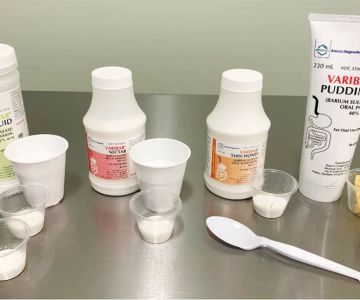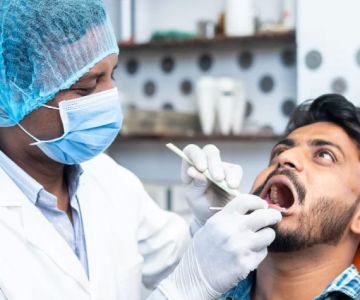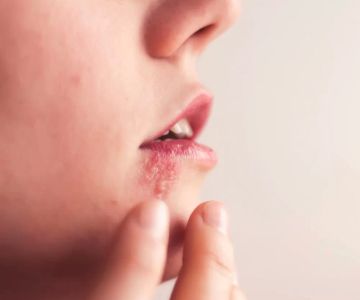1. Introduction to Oral Fluid Drug Testing
Oral fluid drug testing, commonly referred to as saliva drug testing, has become a popular method of screening for substance use due to its non-invasive nature and convenience. These tests are increasingly used in workplaces, law enforcement, and healthcare settings to detect the presence of various drugs in an individual’s system. But what drugs do oral fluid drug tests check for? This article will explore the drugs commonly tested in oral fluid drug screenings, how these tests work, and why they are beneficial for detecting drug use.
2. How Does Oral Fluid Drug Testing Work?
Oral fluid drug testing involves collecting a sample of saliva from an individual, typically using a cotton swab or other collection device. The sample is then analyzed in a laboratory or on-site testing kit to detect the presence of specific drugs or their metabolites. Saliva testing is considered a fast and effective way to detect drug use, as it can provide results within minutes and has a short detection window compared to other testing methods, like urine or blood tests.
2.1. Benefits of Oral Fluid Drug Testing
Oral fluid testing offers several advantages over traditional drug testing methods:
- Non-invasive: Unlike urine tests, oral fluid tests do not require the individual to provide a urine sample, making the process more comfortable and less invasive.
- Fast Results: The testing process is quick, and results are typically available within minutes, especially when using rapid test kits.
- Harder to Cheat: Because the sample is collected in a supervised setting, it is more difficult for individuals to tamper with the results, as opposed to urine tests that can be adulterated or substituted.
- Short Detection Window: Oral fluid testing is particularly effective for detecting recent drug use, as drugs are typically detectable in saliva for a few hours up to 24 hours after use.
3. What Drugs Are Typically Tested in Oral Fluid Drug Tests?
Oral fluid drug tests are designed to detect a wide range of substances, with common drugs tested including alcohol, marijuana, opioids, cocaine, and amphetamines. Let’s take a closer look at each of these substances and why they are commonly checked in saliva drug tests.
3.1. Marijuana (THC)
Marijuana is one of the most commonly tested drugs in oral fluid drug tests. THC, the active component in marijuana, can be detected in saliva shortly after use, often within minutes. However, THC typically clears from saliva within a few hours. Since marijuana is legal in many states, its detection is often important for workplace drug testing or legal purposes, especially when it comes to driving under the influence.
3.2. Cocaine
Cocaine is another drug frequently tested in oral fluid screenings. Cocaine use is detectable in saliva for a short period, usually within 24 hours. Cocaine metabolites can be detected even after the immediate effects of the drug have worn off, making it an important drug for law enforcement and workplace testing.
3.3. Opioids
Opioids, including prescription drugs like oxycodone and illegal substances like heroin, are often tested for in oral fluid drug screenings. Opioids can be detected in saliva within hours of use and are typically present for up to 24 hours. The rising opioid crisis has made opioid testing increasingly important in both healthcare and workplace settings.
3.4. Amphetamines
Amphetamines, such as methamphetamine and ecstasy, are commonly tested in oral fluid drug tests. These drugs are detectable in saliva within a few hours after consumption. Amphetamines can stay in the system for up to 24 hours, making saliva testing an effective way to detect recent use of these stimulants.
3.5. Alcohol
Although alcohol is typically not tested for in standard oral fluid drug tests, there are some saliva tests that can detect alcohol consumption. Alcohol is quickly metabolized in the body and can be detected in saliva for a short period, usually within a few hours after drinking. Some jurisdictions use oral fluid alcohol tests for driving under the influence (DUI) checks.
4. How Long Do Drugs Stay in Your Saliva?
One of the key factors in oral fluid drug testing is the detection window, which refers to how long a drug can be detected in saliva after consumption. Drugs typically remain detectable in saliva for a shorter time than in urine or blood. The exact detection time varies depending on the substance, the individual’s metabolism, and how frequently the drug is used. Here are general guidelines for how long common drugs stay in saliva:
- Marijuana (THC): 1 to 24 hours
- Cocaine: 1 to 24 hours
- Opioids: 1 to 24 hours
- Amphetamines: 1 to 24 hours
- Alcohol: 1 to 2 hours (depending on consumption)
5. Real-Life Example: Workplace Testing
Let’s consider a scenario where a company implements oral fluid drug testing as part of its workplace safety policy. A construction worker, John, was randomly selected for a drug test after showing signs of erratic behavior. The test revealed the presence of marijuana in his system, which had been consumed within the past few hours. John admitted to using marijuana the night before, but the test results showed that he was still under the influence while at work. As a result, John was temporarily suspended and sent for counseling, highlighting the effectiveness of oral fluid drug testing in identifying recent drug use.
6. Why Choose Oral Fluid Drug Testing?
Oral fluid drug testing has several advantages, especially for workplaces, law enforcement, and healthcare providers. It is fast, non-invasive, and provides accurate results for recent drug use. This makes it particularly useful in scenarios where it’s important to know if someone is under the influence at the time of testing, such as for DUI checks or workplace safety assessments. While oral fluid testing has its limitations, particularly with the detection window being shorter than that of urine tests, it is still an essential tool for detecting recent drug use.
7. Conclusion: Oral Fluid Drug Testing for Quick Results
Oral fluid drug tests are a convenient and efficient way to screen for recent drug use. They provide accurate results within minutes and are harder to cheat compared to other drug testing methods. Understanding what drugs are commonly tested for, such as marijuana, cocaine, opioids, and amphetamines, will help you better navigate situations where drug testing is required. For more information about drug testing services, or if you need assistance with implementing oral fluid drug tests in your business or organization, consider exploring resources available at Dentistry Toothtruth for expert recommendations and services.







 Dr. Majd Babik, DDS4.0 (43 review)
Dr. Majd Babik, DDS4.0 (43 review) Dentistry At Suburban Square: Michael I. Wollock, DMD4.0 (1228 review)
Dentistry At Suburban Square: Michael I. Wollock, DMD4.0 (1228 review) Children's Dental FunZone - Pediatric Dentist & Orthodontist - Reseda4.0 (1371 review)
Children's Dental FunZone - Pediatric Dentist & Orthodontist - Reseda4.0 (1371 review) Oakdale Family Dentistry4.0 (45 review)
Oakdale Family Dentistry4.0 (45 review) Park Family and Cosmetic Dentistry5.0 (51 review)
Park Family and Cosmetic Dentistry5.0 (51 review) Elmwood Park Cosmetic Dentistry5.0 (1 review)
Elmwood Park Cosmetic Dentistry5.0 (1 review) The Importance of Oral Health Education During Pregnancy for a Healthy Pregnancy
The Importance of Oral Health Education During Pregnancy for a Healthy Pregnancy Best Tips for Brushing Your Teeth Properly for Healthy Gums: Essential Techniques for Oral Health
Best Tips for Brushing Your Teeth Properly for Healthy Gums: Essential Techniques for Oral Health Why Skipping Dental Checkups Can Lead to Bigger Oral Health Problems
Why Skipping Dental Checkups Can Lead to Bigger Oral Health Problems Advantages of Porcelain Dental Restorations
Advantages of Porcelain Dental Restorations How Can Diabetes Cause Tooth and Gum Problems? Preventing and Managing Oral Health Issues
How Can Diabetes Cause Tooth and Gum Problems? Preventing and Managing Oral Health Issues Healthy Habits for Promoting Good Oral Health and Hygiene: Tips for a Healthy Smile
Healthy Habits for Promoting Good Oral Health and Hygiene: Tips for a Healthy Smile